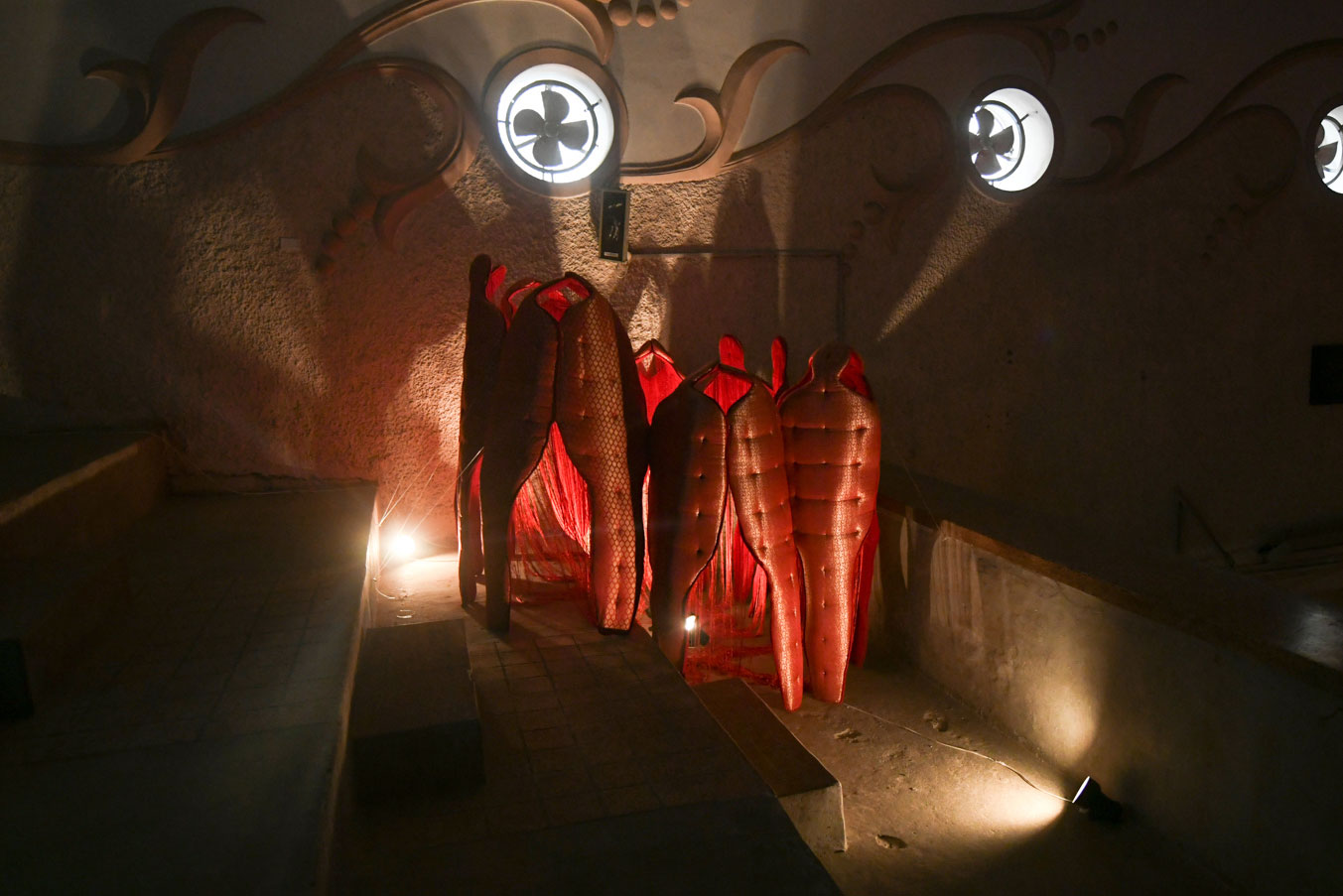Roohi Ahmed
Born in 1966 in Karachi (Pakistan)
Lives and works in Karachi (Pakistan)
Roohi Ahmed is a multi-disciplinary artist; her work often draws upon cartographical references in order to investigate the ontological realities of human existence, in a degenerative socio-political and cultural climate. Ahmed is an Associate Professor at the Indus Valley School of Art and Architecture, Karachi and holds an MFA from the University of New South Wales, Sydney (UNSW Art & Design). She has exhibited widely in Pakistan and internationally, her work having been featured in the 11th Asian Art Biennial, Dhaka. Ahmed has coordinated the Foundation Programme at IVS, as well as having lectured at the University of Karachi’s Visual Studies Department and UNSW Art & Design, Sydney. She has participated in various international artists’ workshops, including: Britto (Bangladesh); Vasl (Pakistan); and Coast (U.K.), and has also been an artist in residence at Cicada Press (Australia), Coast (UK) and VASL (Pakistan). As well as art-making, Ahmed has curated Simply Paper! and her co-curating credits include: Michael Esson: A Survey of Drawing; Michael Kempson: A Survey of Prints, Aboriginal Dreams, and Let’s Draw the Line; and 6X6: The Labyrinth, in Karachi. Ahmed’s art practice investigates an individual’s relationship with society, and the space in which the two co-inhabit. Borrowing from the conventions of map-making and sewing, her work challenges a purely static notion of such a space to promote a temporal logic that reflects our fluctuating interrelationship with the invisible infrastructures that comprise our societal framework.
Ahmed’s work for the Karachi Biennale 2017, Encounters of Another Kind, constructs a narrative using the human figure as an interpretative tool to perceive the world. Ahmed delineates the way in which the sewn figures, eerily resembling body-bags, enable this perception: “Every mark I make articulates a response to the world around me. For me mark-making can be interpreted through the act of sewing. By relocating and bringing together different elements, their meaning and use is transformed and re-contextualized.” The sculptures are thus Ahmed’s highly personal response to the world, manifested in the act of sewing, but they also simultaneously embody an expression of physical histories as shaped by divergent narratives and contexts, forming a collective, and somewhat equivocal unconsciousness. A further layer of complexity is added when one considers the viewer’s interpretation of these objects; each a unique perspective on Ahmed’s personal response to the world around her, hence diversifying the reach of her sculptural installation.

Encounters of Another Kind, 2017.
Banarsi fabric, velvet, polyester filling and metal
Approximately 56 x 157 cm. each

